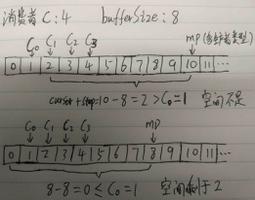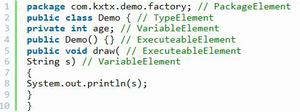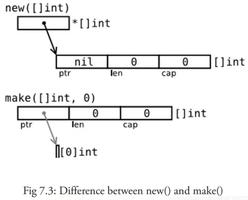详解Java 中的 AutoCloseable 接口
一、前言
最近用到了 JDK 7 中的新特性 try-with-resources 语法,感觉到代码相对简洁了很多,于是花了点时间详细学习了下,下面分享给大家我的学习成果。
二、简单了解并使用
try-with-resources语法比较容易使用,一般随便搜索看下示例代码就能用起来了。JDK 对这个语法的支持是为了更好的管理资源,准确说是资源的释放。
当一个资源类实现了该接口close方法,在使用try-with-resources语法创建的资源抛出异常后,JVM会自动调用close 方法进行资源释放;当没有抛出异常正常退出try代码块时也会自动调用close方法。像数据库链接类Connection,io类 InputStream 或 OutputStream 都直接或者间接实现了该接口。
下面我们通过代码示例来了解如何使用,首先创建一个实现了AutoCloseable接口的类:
public class Resource implements AutoCloseable{
public void read() {
System.out.println("do something");
}
@Override
public void close() throws Exception {
System.out.println("closed");
}
}
1、 不使用这个语法,须主动close关闭
public static void f1(){
Resource resource = new Resource();
try {
resource.read();
} finally{
try {
resource.close();
} catch (Exception e) {
}
}
}
2、使用这个语法,代码更加优雅简洁
public static void f2(){
try(Resource resource = new Resource()) {
resource.read();
} catch (Exception e) {
}
}
注意:read方法本身不抛异常,但是编码时idea提示必须要有catch块,因此可知这个异常的捕获是捕获的close方法抛出的异常。
3、 改成Closeable接口,也可以
接着我们将Resource类上的AutoCloseable接口改为Closeable(如下),此时需要将close方法的异常签名改成IOException,否则编译不通过。注意下面代码主动抛出IOException目的为满足异常签名,否则idea提示要删掉异常签名,变成无异常签名。因此在实现Closeable接口后,异常签名要么没有,要么是IOException或者其子类。
public class Resource implements Closeable{
public void read() {
System.out.println("do something");
}
@Override
public void close() throws IOException{
System.out.println("closed");
throw new IOException();
}
}
接着我们看下Closeable和AutoCloseable关系,发现除了继承关系,Closeable只是将close方法的异常签名变得稍微具体了,从Exception变为IOException。
public interface AutoCloseable {
//省略Java doc
void close() throws Exception;
}
public interface Closeable extends AutoCloseable {
////省略Java doc
public void close() throws IOException;
}
因此无论是实现了 JDK 中的java.lang.AutoCloseable还是java.io.Closeable接口,都能使用try-with-resources语法。此处注意还有点不同的是两个接口的包路径的差异。
三、Java doc 阅读
1、 AutoCloseable 中的 Java doc
An object that may hold resources (such as file or socket handles) until it is closed. The close() method of an AutoCloseable object is called automatically when exiting a try-with-resources block for which the object has been declared in the resource specification header. This construction ensures prompt release, avoiding resource exhaustion exceptions and errors that may otherwise occur.
It is possible, and in fact common, for a base class to implement AutoCloseable even though not all of its subclasses or instances will hold releasable resources. For code that must operate in complete generality, or when it is known that the AutoCloseable instance requires resource release, it is recommended to use try-with-resources constructions. However, when using facilities such as java.util.stream.Stream that support both I/O-based and non-I/O-based forms, try-with-resources blocks are in general unnecessary when using non-I/O-based forms.
以上是 AutoCloseable 的完整 Java doc,大概意思是:
像文件和socket等对象,在调用其close方法后才会释放持有的资源。当使用try-with-resources语法实例化一个实现了AutoCloseable接口的类的对象时,close()方法将会自动被调用,确保及时释放资源,避免可能发生的资源耗尽问题。
我们经常能见到一些基类实现了AutoCloseable接口,这是可行的,哪怕并不是所有的子类需要释放资源,或者哪怕并不是全部实例都持有需要释放的资源。在一个操作需要以通用的方式来结束,或者当你知道其实例需要释放资源时,建议实现AutoCloseable接口,并使用try-with-resources语法。
接着我们看下AutoCloseable.close方法上的Java doc,以下是原文:
Closes this resource, relinquishing any underlying resources. This method is invoked automatically on objects managed by the try-with-resources statement.
While this interface method is declared to throw Exception, implementers are spanly encouraged to declare concrete implementations of the close method to throw more specific exceptions, or to throw no exception at all if the close operation cannot fail.
Cases where the close operation may fail require careful attention by implementers. It is spanly advised to relinquish the underlying resources and to internally mark the resource as closed, prior to throwing the exception. The close method is unlikely to be invoked more than once and so this ensures that the resources are released in a timely manner. Furthermore it reduces problems that could arise when the resource wraps, or is wrapped, by another resource.
Implementers of this interface are also spanly advised to not have the close method throw InterruptedException.
This exception interacts with a thread's interrupted status, and runtime misbehavior is likely to occur if an InterruptedException is suppressed.
More generally, if it would cause problems for an exception to be suppressed, the AutoCloseable.close method should not throw it.
Note that unlike the java.io.Closeable#close close method of java.io.Closeable, this close method is not required to be idempotent. In other words, calling this close method more than once may have some visible side effect, unlike Closeable.close which is required to have no effect if called more than once.
However, implementers of this interface are spanly encouraged to make their close methods idempotent.
翻译如下:
此方法用于关闭资源,放弃任何底层基础资源。当使用try-with-resources语法管理对象时,close方法将在try代码块逻辑结束后自动被调用。
虽然AutoCloseable中的close方法被声明为抛出Exception这个异常,但是强烈建议实现类声明更加具体的异常,或者当close操作不允许失败时声明为不抛出任何异常。
实现者需要注意close方法操作失败的情况,强烈建议放弃底层资源,并在抛出异常前在内部将资源标注为不可用。close方法不太可能被反复调用,因此这样确保close被调用后资源被及时标志为释放。此外,这样还能减少资源被其他资源包装时可能出现的问题。
强烈建议实现者在实现close方法时不要抛出InterruptedException。InterruptedException与线程状态交互影响,如果处理不当,可能导致运行时错误。更一般的情况下,当一个异常的不当处理会导致题,AutoCloseable.close方法就不应该抛出这个异常。
与java.io.Closeable.close方法不同的是,AutoCloseable.close方法的调用不要求幂等。换句话说,多次调用AutoCloseable.close可能会产生一些可见的副作用,不像Closeable.close允许多次调用。然而,强烈建议实现者将close方法实现为幂等。
2、 Closeable 中的 Java doc
Closeable类上的Java doc无额外有用信息,我们看下Closeable.close方法上的Java doc:
Closes this stream and releases any system resources associated with it. If the stream is already closed then invoking this method has no effect.
As noted in AutoCloseable#close(), cases where the close may fail require careful attention. It is spanly advised to relinquish the underlying resources and to internally mark the Closeable as closed, prior to throwing the IOException.
翻译如下:
此方法用于关闭流并释放与之相关的任何系统资源。
如果流已经关闭,则close方法的调用将无任何效果。如同AutoCloseable#close()的Java doc描述的那样,需要关注关闭失败的情况。
在抛出IOException异常前,强烈建议放弃底层资源并在内部标注资源已关闭。
四、揭开魔术面纱
1、怎么实现的
由于不确定try-with-resources是一种语法糖,还是在JVM虚拟机层面新加指令进行的支持,我尝试使用javap解析class文件后,通过解析结果查表对照发现,两段代码不同之处对应的字节码指令并不是此语法的含义,判定其确实是一种语法糖,在变成class文件的时候已经由编译器(javac)处理了。既然如此,我们就直接将其反编译,得到的结果如下:
public static void f1() {
Resource resource = new Resource();
try {
resource.read();
} finally {
try {
resource.close();
} catch (Exception var7) {
}
}
}
public static void f2() {
try {
Resource resource = new Resource();
Throwable var1 = null;
try {
resource.read();
} catch (Throwable var11) {
var1 = var11;
throw var11;
} finally {
if (resource != null) {
if (var1 != null) {
try {
resource.close();
} catch (Throwable var10) {
var1.addSuppressed(var10);
}
} else {
resource.close();
}
}
}
} catch (Exception var13) {
}
}
可以看到代码片段1与原代码几乎一样,但是代码片段2与原代码确实大相径庭,接着我们来分析下:
关注点1:new Resource()操作被放到了try内部了,如果不用try-with-resources语法,我们一般放到try外面。
关注点2:resource.read()操作被捕获了Throwable,并通过赋值记录了下来。
关注点3:fianally中的if (resource != null)这一步骤是多余的,因为只有在new Resource()操作抛异常才会存在resource为空的情况,然而这个时候就不会执行到这里来了。
关注点4:此时一定要执行resource.close()了,当var1不为空(即resource.read()抛出了异常),则需捕获close可能抛出的异常,并调用var1.addSuppressed记录关联try中抛出的异常,我们后面再分析这步骤。
关注点5:由于在原始代码里我们捕获了close方法抛出的异常,因此这里当上一步的var1为空时可能抛出的异常需要在最外层捕获。
2、Throwable.addSuppressed
public final synchronized void addSuppressed(Throwable exception) {
if (exception == this)
throw new IllegalArgumentException(SELF_SUPPRESSION_MESSAGE, exception);
if (exception == null)
throw new NullPointerException(NULL_CAUSE_MESSAGE);
if (suppressedExceptions == null) // Suppressed exceptions not recorded
return;
if (suppressedExceptions == SUPPRESSED_SENTINEL)
suppressedExceptions = new ArrayList<>(1);
suppressedExceptions.add(exception);
}
这段代码我们只需要了解,每一个Throwable实例中有一个List类型的字段,本方法将入参中的异常添加到了这个List的末尾。
Appends the specified exception to the exceptions that were suppressed in order to deliver this exception. This method is thread-safe and typically called (automatically and implicitly) by the try-with-resources statement.
The suppression behavior is enabled unless disabled Throwable(String, Throwable, boolean, boolean) via a constructor. When suppression is disabled, this method does nothing other than to validate its argument.
Note that when one exception causes another exception, the first exception is usually caught and then the second exception is thrown in response. In other words, there is a causal connection between the two exceptions. In contrast, there are situations where two independent exceptions can be thrown in sibling code blocks, in particular in the try block of a try-with-resources statement and the compiler-generated finally block which closes the resource. In these situations, only one of the thrown exceptions can be propagated. In the try-with-resources statement, when there are two such exceptions, the exception originating from the try block is propagated and the exception from the finally block is added to the list of exceptions suppressed by the exception from the try block. As an exception unwinds the stack, it can accumulate multiple suppressed exceptions.
An exception may have suppressed exceptions while also being caused by another exception. Whether or not an exception has a cause is semantically known at the time of its creation, unlike whether or not an exception will suppress other exceptions which is typically only determined after an exception is thrown.
Note that programmer written code is also able to take advantage of calling this method in situations where there are multiple sibling exceptions and only one can be propagated.
翻译如下:
为了传递此异常(入参),将其附加到记录到this中的实例字段(List)中。这个方法是线程安全的,通常由try-with-resources语句(自动和隐式地)调用。除非通过Throwable(String, Throwable, boolean, boolean)构造方法来显示禁用,否则将启用这个行为。禁用后,此方法除了验证参数外不做其他任何事情。
注意,当一个异常引发另一个异常时,通常会捕获第一个异常,然后在响应中抛出第二个异常(就是抛出最上层的异常)。换句话说,这两个异常之间存在因果关系。当然也存在例外情况,可以在兄弟代码块中抛出两个独立的异常,特别是在try-with-resources语句的try块和编译器生成的finally块(用于关闭资源)中。在这些情况下,只能传播一个抛出的异常。在try-with-resources语句中,如果存在两个这样的异常,则传播源自try块的异常,并将来自finally块的异常记录到try代码块抛出的异常中。当你展开一个异常堆栈时,你可以看到它累积的多个记录的未抛出的异常(因为只能抛出一个异常,其他异常只能通过这个方式来记录)。
一个异常可能记录有未抛出的异常,同时其自身也是由另一个异常引起的。一个异常是否由其他异常引起在创建时就已经在语义上知道了(即通过构造函数),这与这个异常是否通过Throwable.addSuppressed方式记录有异常不同,后者通常只在抛出异常后才能知道。
注意,程序员编写的代码,也能够在有多个兄弟异常(兄弟异常可以理解为相互并无关联)且只能传播一个异常的情况下,利用调用此方法的优势。
阅读完这个Java doc注释后,建议结合Throwable类源码加深理解。
五、JDK 9中的改进
通过搜索学习,还了解到在 JDK 9中对此语法进行了改进,JSR334对其进行了描述,感兴趣的可以点击 此处 或者 此处 来进一步了解优化点。
六、最佳实践
本次学习总结出如下最佳实践:
- 使用try-with-resources语法无论是否抛出异常在try-block执行完毕后都会调用资源的close方法。
- 使用try-with-resources语法创建多个资源,try-block执行完毕后调用的close方法的顺序与创建资源顺序相反。
- 使用try-with-resources语法,try-block块抛出异常后先执行所有资源(try的()中声明的)的close方法然后在执行catch里面的代码然后才是finally。
- try的()中管理的资源在构造时抛出的异常,需要在本try对应的catch中捕获。
- 自动调用的close方法显示声明的异常,需要在本try对应的catch中捕获。
- 当你的try-catch-finally分别在try/catch/finally中有异常抛出,而无法抉择抛出哪个异常时,你应该抛出try中对应的异常,并通过Throwable.addSuppressed方式记录它们间的关系。
以上是 详解Java 中的 AutoCloseable 接口 的全部内容, 来源链接: utcz.com/z/338993.html









